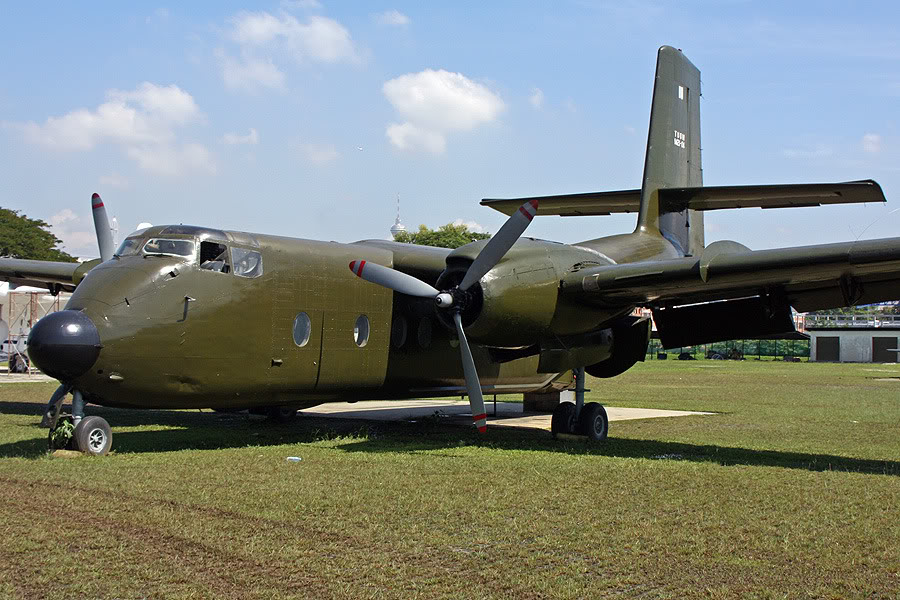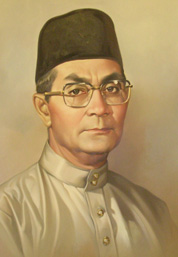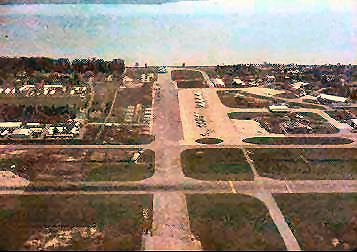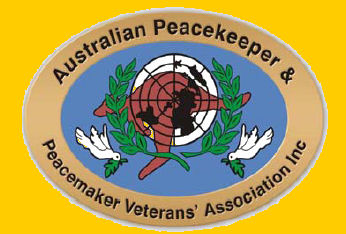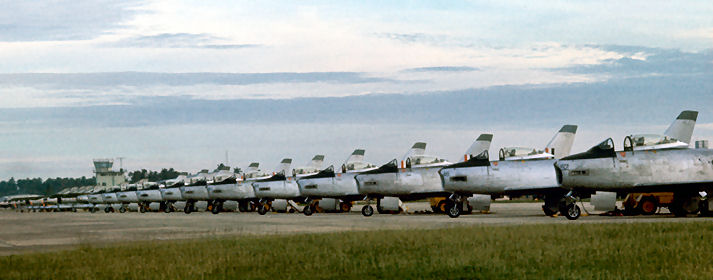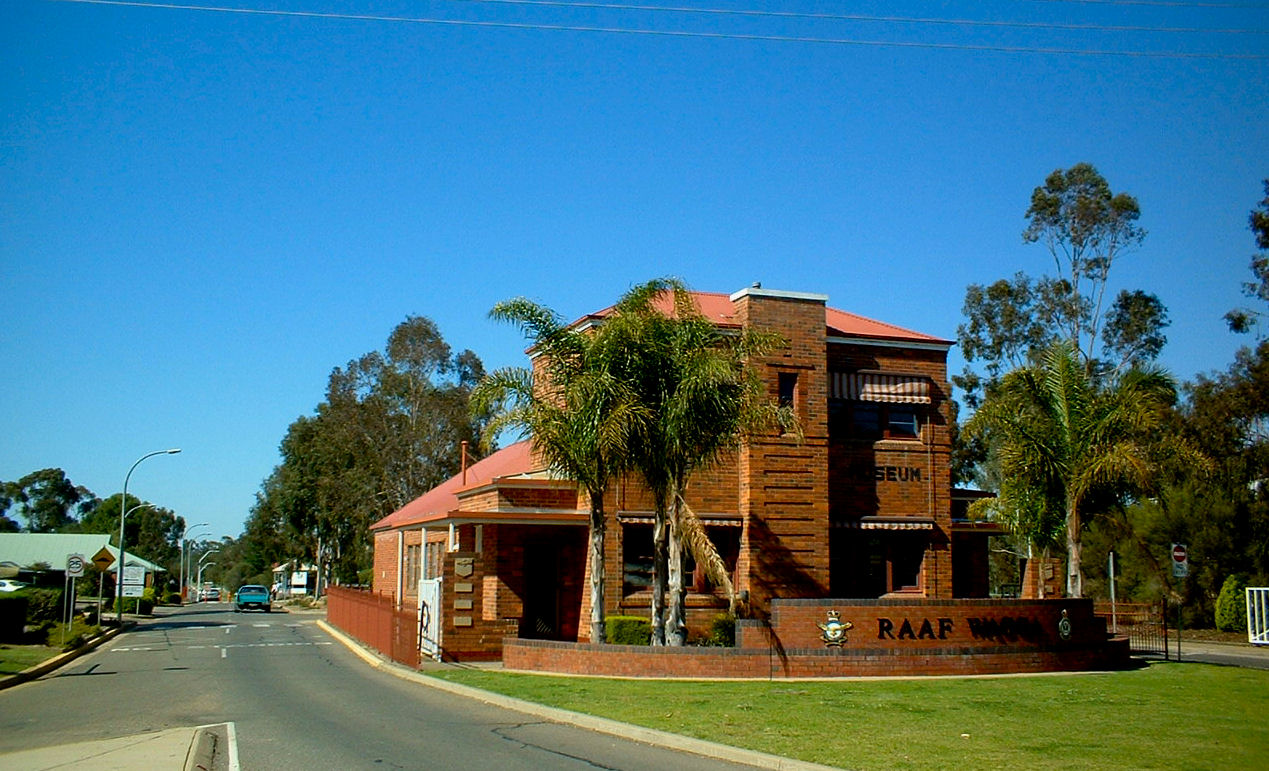|
|
||||||||||||||||||||
|
Radschool Association Magazine - Vol 42 Page 8 |
||||||||||||||||||||
|
Privacy Policy | Editorial Policy | Profit Policy | Join the Association | List of Members | Contact us | Index | Links |
||||||||||||||||||||
|
Back Go to page: 1 2 3 4 5 6 7 8 9 10 11 12 13 14 15 16 17 18 19 20 Forward |
||||||||||||||||||||
|
|
||||||||||||||||||||
| The People I meet!! | ||||||||||||||||||||
|
|
||||||||||||||||||||
| Click the pic | ||||||||||||||||||||
|
Qantas milestone! |
||||||||||||||||||||
|
|
||||||||||||||||||||
|
ONE OWNER - 1,000 DRIVERS
A milestone was recently reached at Qantas with B747-400 VH-OJG reaching a record 100,000 flight hours. B747-438 registered as VH-OJG, first flew on 11 July 1990 at Paine Field, Everett. After 4 Boeing test flights and 2 Qantas Customer Acceptance flights, it was accepted by Qantas on 15 August 1990 in Las Vegas, Nevada.
VH-OJG was the 7th 747-400 to be purchased by Qantas and the 801st B747 built by Boeing at the Everett factory in Washington State. On 19 May 2012 it achieved 100,000 flying hours, operating the QF24 service between Bangkok and Sydney. It ceased revenue operations on 20 July 2012 and was prepared for return to the lessor on 14 August, 1 day short of its 22ndbirthday.The aircraft departed Sydney on 21August 2012 at 13:25 on its final flight to Marana in Arizona.
It arrived at Marana having accrued 100,612 air hours and 12,489 cycles making it the highest time aircraft to have operated in the Qantas fleet. Over its 22 year operational life VH-OJG has flown an average of 12.5 hours per day, accumulated a total of 100,612 flight hours and 12,489 flight cycles. Carrying over 3.8 million passengers, VH-OJG has travelled over 85 million kilometres, which is equivalent of 110 return trips to the moon !
ADF Numbers.
There has been talk recently concerning the numbers of personnel in today’s ADF and how those numbers have been drastically reduced since 2007. We thought we’d check and get the true numbers so we wrote to the ADF and asked.
This is their response.
|
||||||||||||||||||||
|
||||||||||||||||||||
So – the truth is, the numbers in the ADF have actually increased by 3,944, or 7.4%, since 2007.
|
||||||||||||||||||||
|
Should I Really Join Facebook? Robin Haynes
A smile for people in the over 60 group!
When I bought my iphone, I thought about the 30-year business I ran with1,800 employees, all without a mobile phone that plays music, takes videos, pictures and communicates with Facebook and Twitter. Recently I signed up, under duress, for Twitter and Facebook so my seven kids, their spouses, 13 grandkids and 2 great grand kids could communicate with me in the modern way. I figured I could handle something as simple as Twitter with only 140 characters of space. That was before one of my grandkids hooked me up for Tweeter, Tweetree, Twhirl, Twitterfon, Tweetie and Twittererific Tweetdeck, Twitpix and something that sends every message to my cell phone and every other program within the texting World. My phone was beeping every three minutes with the details of everything except the bowel movements of my entire next generation.
I am not ready to live like this.
I now keep my iphone in the garage in my golf bag. The kids bought me a
GPS for my last birthday because they say I get lost every now and then
going over to the supermarket or library. I keep that in a box under my
tool bench with the Blue tooth [it's red] phone I am supposed to use
when I drive. I used it once when I was standing in line at Coles
talking to my wife and everyone within 50 mtrs was glaring at me. I had
taken out my hearing aid to use it, and I was talking little loud! I
mean the GPS looked pretty smart on my dash board, but the lady inside
that gadget was the most annoying, rudest person I had run into in a
long time. Every 10 minutes, she would sarcastically say, "Re-calc-u-lating."
You would think that she could be nicer. It was like she could barely
tolerate me. She would let go with a deep sigh and then tell me to make
a U-turn when possible. Then if I made a right turn instead, well, it
was not a good relationship..
When I get really lost now, I call my wife and tell her the name of the cross roads and while she is starting to develop the same tone as Gypsy, the GPS lady, at least she loves me. To be perfectly frank, I am still trying to learn how to use the cordless phones in our house. We have had them for 4 years, but I still haven't figured out how I can lose three phones all at once and have to run around digging under chair cushions and checking bathrooms and the dirty laundry baskets when the phone rings.
The world is just getting too complex for me. They even mess me up everytime I go to the supermarkets. You would think they could make a decision themselves, but this sudden "Paper or Plastic?" every time I check out just leaves me confused. I bought some of those cloth reusable bags to avoid looking stupid, but I never remember to take them with me. Now when they ask me, "Paper or Plastic?" I just say, "Doesn't matter to me. I am bi-sacksual." Then it's their turn to stare at me with a blank look.
I was recently asked if I tweet. I answered, No, but I do fart a lot. We senior citizens don't need any more gadgets. The TV remote and the garage door remote are already more than we can handle.
|
||||||||||||||||||||
|
The Ho Chi Minh trail in Laos.
The Ho Chi Minh Trail is arguably one of the greatest feats of military engineering in history, a Goliath of ingenuity and bloody determination. At its peak this 20,000km transport network spread like a spider’s web through Vietnam, Laos, and Cambodia, an indestructible labyrinth through which the North Vietnamese fed the war in the South. Without the trail, there could have been no war, a fact the Americans knew only too well. In a sustained eight-year campaign to destroy it they flew 580,000 bombing missions, dropped more than two million tons of ordnance on neutral Laos, denuded the jungle with chemicals, and seeded clouds to induce rain and floods. At one point Nixon even mooted the notion of deploying nuclear weapons.
There is an excellent site dedicated to the trail – you can see it HERE
Why British police don’t have guns.
BBC News Magazine
The deaths of two female police constables on the 18 September last year, have brought into focus the unarmed status of most British police. Why does Britain hold firm against issuing guns to officers on the beat? It's the single most obvious feature that sets the British bobby apart from their counterparts overseas. Tourists and visitors regularly express |
||||||||||||||||||||
|
|
||||||||||||||||||||
|
But to most inhabitants of
the UK - with the notable exception of Northern Ireland - it is a
normal, unremarkable state of affairs that most front-line officers do
not carry guns. Unremarkable, that is, until unarmed officers like
Nicola
For a heavily urbanised
country of its population size, the situation in Great Britain
is arguably unique. Film director Michael Winner, founder of the Police
Memorial Trust, and Tony Rayner, the former chairman of Essex Police
Federation, have both called for officers to be routinely armed. But
despite the loss of two of his officers, Greater
But one thing is clear. When asked, police officers say overwhelmingly that they wish to remain unarmed. A 2006 survey of 47,328 Police Federation members found 82% did not want officers to be routinely armed on duty, despite almost half saying their lives had been "in serious jeopardy" during the previous three years. It is a position shared by the Police Superintendents' Association and the Association of Chief Police Officers.
The British public are not
nearly so unanimous.
An ICM poll in April 2004 found 47% supported arming all police, compared with 48% against. In 2007, the centre-right think-tank Policy Exchange found 72% of 2,156 adults wanted to see more armed police patrols. For decades there have been incidents that have led to calls for issuing all officers with firearms. Cases like those of Sharon Beshenivsky, shot dead during a robbery in 2005, or of the three plain-clothes officers murdered by Harry Roberts in west London in 1966, or the killing of PC Sidney Miles in the Derek Bentley case of 1952.
Few expect the system to change even after widespread public horror at the deaths of PCs Bone and Hughes. For one thing, incidents such as that in Greater Manchester are extremely rare. Overall gun crime, too, remains low.
In 2010-11, England and Wales witnessed 388 firearm offences in which there was a fatal or serious injury, 13% lower than the previous 12 months. In Scotland during the same period, there were two fatal and 109 non-fatal injuries during the same period, a decade-long low. Additionally, officers, chief constables and politicians alike are wary of upsetting an equilibrium that has been maintained throughout Britain's 183-year policing history.
"There's a general recognition that if the police are walking around with guns it changes things," says Richard Garside, director of the Centre for Crime and Justice Studies. Arming the force would, say opponents, undermine the principle of policing by consent - the notion that the force owes its primary duty to the public, rather than to the state, as in other countries. This owes much to the historical foundations of British criminal justice, says Peter Waddington, professor of social policy at the University of Wolverhampton.
"A great deal of what we
take as normal about policing was set out in the early 19th Century," he
says. "When Robert
Over time, this notion of guns being inimical to community policing - and, indeed, to the popular conception of the Dixon of Dock Green-style bobby - was reinforced. While some in London were issued with revolvers prior to 1936, from that date only trained officers at the rank of sergeant or above were issued with guns, and even then only if they could demonstrate a good reason for requiring one.
Today only a small proportion of officers are authorised to use firearms. Latest Home Office figures show there were just 6,653 officers authorised to use firearms in England and Wales - about 5% of the total number.
None of which implies, of
course, that the British police are somehow gun-free. Each police force
has its own firearms unit. Police armed response vehicles have been
deployed since 1991. In addition, trained officers have had
Particularly in London, the sight of armed officers at airports, embassies and other security-sensitive locations has become a familiar one, especially since the 11 September attacks. However much firearms become an accepted part of British life, former Met deputy assistant commissioner Brian Paddick doubts police themselves will ever support a universal rollout. For one thing, the sheer cost of equipping all personnel with weapons as well as providing regular training would be prohibitive at a time of public spending cuts, he says.
In addition, Paddick adds, front-line officers would not be keen to face the agonising, split-second decisions faced by their counterparts in specialist firearms units. "In terms of the police being approachable, in terms of the public being the eyes and ears of the police, officers don't want to lose that," he says.
"Every case in which a police officer has shot someone brings it home to unarmed officers the sheer weight of responsibility that their colleagues face." Cases like that of Jean Charles de Menezes, shot dead by a Met firearms officer after he was wrongly identified as a terrorist, illustrate Paddick's point. For now, at least, that starkest of all distinctions between British officers and those abroad looks secure.
|
||||||||||||||||||||
|
Commenting on a complaint from a Mr. Arthur Purdey, in the UK Midlands, about a large gas bill, a spokesman for North West Gas said, 'We agree it was rather high for the time of year. It's possible Mr. Purdey has been charged for the gas used up during the explosion that destroyed his house”.
|
||||||||||||||||||||
|
F111’s last sortie.
On the 6th April, 2013, the world’s last operational F-111C left its Amberley base for a new home near Sydney. The aircraft is being driven to a museum run by Historic Aircraft Restoration Society (HARS) at Wollongong. Wing Commander Clive Wells said everyone at Amberley was sad to see it go. "It was the home of the F-111 so of course everyone that works here and has worked on the aircraft is disappointed to see them go," he said. |
||||||||||||||||||||
|
|
||||||||||||||||||||
|
"Some of these people have spent their whole career flying and looking after the aircraft so it's a second family. It certainly was a very unique aircraft. Who knows what technology will bring forth into the future? Maybe there'll be something like that again."
You can see video of it HERE.
|
||||||||||||||||||||
|
Irish police are being handicapped in a search for a stolen van because they cannot issue a description. It's a Special Branch vehicle and they don't want the public to know what it looks like.
|
||||||||||||||||||||
Service at Butterworth Air Base, 1970 – 1989Prepared in Support of the RCB Claim for Recognition of Service
Ken Marsh
Introduction.
In many ways Butterworth in the 1970s and 80s was an ideal posting. It offered air force families, in particular, the chance of an overseas posting with additional allowances and on the surface it appeared exotic and peaceful. Because of strict press censorship and the desire of the Malaysian Government not to unduly alarm the local populace or harm the economy, little was said about the existing and serious communist threat. As the local population generally had little to fear from the communists from 1951 on, this decision seems well founded. It is perhaps because of this decision that little has been written on the subject and that the nature of the insurgency and its impact on the country is not generally understood.
|
||||||||||||||||||||
|
|
||||||||||||||||||||
|
|
||||||||||||||||||||
|
Australian personnel on strength at Butterworth Air Base (BAB) during the period of the second communist insurgency were exposed to ‘objective danger’ and as such their service should be recognised as ‘war-like’.
The Threat.
The second insurgency commenced on 17 June 1968 when ‘the Malaysian Communist Party (MCP) launched an ambush against the Security Forces in the area of Kroh–Bentong in the northern part of the Malaysian Peninsular. They achieved a major success, killing 17 members of the Security Forces. Kroh-Bentong is less than 80 kilometres in a straight line from Butterworth. In the lead up to the second insurgency the communists had ‘developed new techniques of guerrilla warfare and learned much from the Vietnam War on the techniques of fighting guerrilla warfare.
The modus operandi of guerrillas is hit and run attacks by small groups against much larger military forces. Tactics involve sabotage, ambush, raids and petty warfare. The elements of surprise and ‘extraordinary mobility’ are used to harass the enemy. Following the communist split in the early 1970s Chin Peng’s group ‘sent out “Shock Brigades” – small units which moved south down the peninsula not only to pick off isolated police posts and Security Forces, jungle patrols but also through propaganda to rekindle support for the M.C.P. from their base on the Thai-Malaysian border.
A 1973 report prepared by the United States’ Central Intelligence Agency describes a careful and methodical re-establishment of a very competent communist guerrilla force in North West Malaysia.
By mid-1968, some 600 armed Communist insurgents began to move gradually from inactive to active status under stimulation from Peking. They moved back across the border (from Thailand), first to reconnoitre and then to permanently position themselves in small base areas in northern West Malaysia. The Communist Terrorists (CTs) or members of the Malayan National Liberation Army (MNLA) which numbered about 600 regular armed men at the close of the Emergency (1948-1960), expanded to about 1,000 by 1968, to about 1,600 in mid-1970, and to about 1,800 in mid-1972. The slow upward progression in the number of armed insurgents represents a positive gain and the existence of small bases capable of accommodating about 40-60 CTs points toward a long-term potential expansion.
The Peking-inspired revival of the armed insurgency can be fixed to the date of 17 June 1968 when a force of the MNLA, for the first time since the late 1950s, attacked a Malaysian security force unit on Malaysian territory. This well-trained Communist force numbered about 40 armed and uniformed men and their ambush was effectively carried out. The evidence is that the revival of the insurgency in mid-1968 reflected from the start considerable military competence: good planning, tactical caution, good execution. CT units were armed and given uniforms in Southern Thailand and were infiltrated skilfully into Malaysian territory with the initial mission of reconnoitring and re-establishing contacts with underground insurgents. Their mission later became that of making selective attacks on Malaysian security force units and undertaking selective sabotage of key installations in West Malaysia.
Toward the end of 1968, the number of NMLA (or CT) incursions from southern Thailand gradually increased. In late 1970, it was solidly confirmed that small groups of CT infiltrators had permanently established small bases for inside Malaysia operations, a development occurring for the first time since the late 1950s. Later, the base camps were reported to be capable of supporting 40-60 CTs, as they included food caches.
The CTs were still building their units and were not in a phase of general offensive operations, but they did engage in selective strikes against government forces. A major incident involving the mining by CT forces of the main west coast road linking Malaysia and Thailand took place in late October 1969. On 10 December, a strategic installation was hit when a group of CTs blew up the 100-foot-long railway bridge on Malaysian territory about two miles southwest of Padang Besar, Perlis Province, severing for a few days the main railway link between Thailand and Malaysia. Gradually the CTs increased the number of cross-border incursions, their calculation having been to demonstrate their ability to operate on Malaysian territory without suffering extensive combat losses. They wanted to test their own ability to safely infiltrate, to hit important installations and roads and to move bigger units across undetected. Their planning was careful, the pace deliberate, and the actions generally low risk.
By 1971 guerrilla strength had grown to an
estimated 1,200 with another 3,000 in the villages. They had infiltrated
their former village-bases in Kelantan, Kedah and Perak and were operating
along the same lines as they had done in the 1950s. Penang’s Province
Wellesley (now Seberang Perai), in which BAB is located, shares its northern
and
The communist’s 8th Assault Unit with a strength of between 60 and 70 CTs, was active in South Kedah, including the area around Kulim, until forced to withdraw by Malaysian security forces in 1978. Kulim is less than 30 kilometres by road from Butterworth.
By October 1974 the MCP leadership had split into three different factions following internal conflicts going back to early 1970 with each faction tried to outdo the other in militancy and violence..
|
||||||||||||||||||||
|
Penang Attacked During ‘New Emergency.
In September 1975 the Malaysian Prime Minister,
Tun Razak, described the recent resurgence of communist
Not only had there been a number of spectacular terrorist attacks – the bombing of the capital’s War Memorial; the assassination of Perak’s Chief of Police; and the grenade and rocket attacks on the Police Field Headquarters, Kuala Lumpur military air base and several camps in Johore, Port Dickson and Penang – but also, and perhaps more ominously, there had been a steady increase in the preceding three years in the number of police and security force personnel killed and injured. Moreover, the communists seem to have been able to attract recruits and solicit at least some support throughout the peninsula.
|
||||||||||||||||||||
|
There are two times when a man doesn't understand a woman. Before marriage and after marriage.
|
||||||||||||||||||||
|
Communist Successes.
At the initial stage of their second insurgency, the MCP achieved a significant amount of success. Their actions at this stage were more bold and aggressive and caused considerable losses to the Security Forces. These successes were due to their preparation and the training that they received during the “lull periods” or the reconsolidation period after the end of the first insurgency. By this time, they also had significant numbers of new members who were young and very aggressive. They had learned from the past that they could no longer rely on sympathizers from the poor or village people for their food and logistics.
1971
1974
1975
1987
Malaysian Government Response.
In response to Communist inspired fatal race riots in Kuala Lumpur in May 1969 the Government acted promptly by reintroducing counter insurgency measures that proved effective during the Emergency years [1948 – 1960]. To guarantee internal security, the government maximised the employment of police and provided additional powers to the military to conduct police operations by revisiting the Internal Security Act of 1960. They then gradually reintroduced counter-guerrilla measures that proved effective during the Emergency years. These included ‘short-term curfews and food-denial programmes in those areas thought to be targeted by CTs.
The Malaysian Government also introduced a new strategy for fighting the MCP. It was known as Security and Development, or KESBAN, the local acronym, and focused on civil military affairs. KESBAN constituted the sum total of all measures undertaken by the Malaysian Armed Forces and other (Government) agencies to strengthen and protect society from subversion, lawlessness, and insurgency which effectively broke the resistance.
The government also instituted other security measures in order to meet the MCP menace, including strict press censorship, increasing the size of the police force, resettling squatters and relocating villages in “insecure” rural areas. By mid 1975, when the MCP militant activities were at a peak, the government promulgated a set of Essential Regulations, without declaring a state of emergency. The Essential Regulations provided for the establishment of a scheme called a ‘Rukun Tetangga,’50 ‘Rela’ (People’s Volunteer Group). The concept of “Rukun Tetangga” (Neighborhood Watch) had made the Malays, Chinese, and Indians become closer together, and more tolerant of each other.
The Government decided against declaring a state of emergency during the second insurgency. The reason was a desire to avoid the fears of the populace (leading to increase in ethnic antipathy) and to avoid scaring away needed foreign investment.
Crisis in the Malaysian Government.
While the government responded to the emergency effectively, as demonstrated by its final victory, the Communists did manage to unsettle the government.
These allegations arose in the heat of UMNO politics during the party’s annual elections for top posts, and were taken so seriously that two UMNO deputy ministers and several Malay journalists were detained for communist activities.
The communist threat was so serious during the administration of the third Prime Minster Hussein Onn (1976-81) that it was alleged the government had been infiltrated and there was communist influence among United Malays National Organisation politicians (UMNO – Malaysia’s largest Political Party).
|
||||||||||||||||||||
|
There are 3 kinds of men in the world: Some remain single and make wonders happen. Some have girlfriends and see wonders happen. The rest get married and wonder what happened!
|
||||||||||||||||||||
|
Contrast to 48 – 60.
In June 1948 the murder of three planters in the
state of Kedah marked the start of the Malayan Emergency, or first
insurgency. From the start the communists looked to the local population for
support with food and money and coerced cooperation with acts of murder and
violence. By 1951
Chin Peng had recognised that terrorism
against
The British Army’s General Sir Harold Briggs (right) arrived in Malaya in 1951 and shortly thereafter developed and implemented the ‘Briggs Plan. This brought about a serious food crisis for the insurgents because it isolated them from their food suppliers – the Chinese squatters living on the jungle fringes who were forcibly removed by the government and transferred to fenced-in ‘new villages’ that came under government control. This, along with other military initiatives, saw the guerrillas driven ‘‘deeper and deeper into the jungle.
In the spring of 1953 Chin Peng, the communist leader, fled Malaya to direct operations from Thailand. This had a devastating impact on the morale of the CTs and to many in many ways it seemed that the heart had gone out of the cause.
Before the end of 1953 General Sir Gerald Templer
(below),
British High Commissioner to Malaya, expressed the view that the ‘military
war’s nearly over’ and that only ‘the political one remains.’ It was in
this year that Malacca was declared the country’s first ‘white area’. A
white area was one considered ‘out of the war’. All restrictions such as
curfews, rationing and police checks were lifted. By 1955, 14,000 square
miles of Malaya had been declared ‘white’
By the time the Second Battalion, Royal Australian Regiment arrived in Penang in 1955 it was a white area. After 1955 ‘when it was evident that the communists were on the run and the government had gained the upper hand’, Penang was a popular ‘rest and relaxation centre’ for many Commonwealth troops and support personnel’, many of whom drove from Kuala Lumpur while others caught the overnight train.
At the time the RAAF received ownership of Butterworth Air Base (BAB) in 1957, the Australian government decided to base three operational units there, which meant providing accommodation for the families of RAAF members. This despite Malaya being ‘an ‘operational’ zone, albeit a fairly benign one.
RAAF School Penang was established in 1958. Prior to 1958, the Australian commitment at Butterworth was the Airfield Construction Unit. The few primary school-aged dependants of these men attended either the RAF School at Butterworth (which closed when the RAF returned to England in 1960) or the British Army Children's School at Georgetown, Penang. Secondary pupils attended either the British Secondary School at Cameron Highlands or at Singapore.
It is worth noting the difference between the above circumstances and those at Johore which remained one of the few ‘black’ areas in 1955. The area was considered too dangerous for army wives and they remained in Singapore, but would occasionally be invited to spend a weekend in Kluang if the police could guarantee the safety of the houses in which they would stay.
By September 57 only 1,360 CTs remained in Malaya, with another 470 over the border in Thailand. This had reduced to 250 active CTS in the country by the end of 1958.
While it seems the number of active terrorists during the first insurgency were significantly more in the early years, history shows they were effectively defeated early on, with Chin Peng fleeing the country in 1953. The picture painted by Noel Barber in ‘The War of the Running Dogs’ and other sources is of an demoralised enemy being forced further and further into the jungle where they were hunted down by the security forces. From 1953 on more and more areas were declared ‘white’, meaning they were effectively ‘out of the war’.
By the middle of 1970 there were around 1,600 well trained, bold, aggressive and competent CTs active in Malaysia supported by a greater number of cadres. The CIA estimated that by 1972 this number had risen to around 1800. Richard Stubbs, in his 1977 paper, estimates the number of guerrillas at around 2,600 with Ching Peng’s group being around 2000. It is further estimated that there were approximately 15,000 supporting cadres in Peninsula Malaysia. From the start of the insurgency they targeted security forces, including military establishments, and public infrastructure with their activities peaking in 1975.They successfully conducted terrorist activities from the Thai border in the north to Johore in the south and penetrated areas that had been declared white – and therefore out of the war – since the mid-1950s.
These forces had learned to operate without reliance on the support of the local population – a factor that had contributed to their defeat during the Emergency. Following the surrender of two factions in 1987, around 1300 guerrillas remained active. For almost 20 years they had maintained numbers at a higher level than at any time since the end of 1957 and were not contained in the jungles as they had been for much of the first insurgency.
|
||||||||||||||||||||
|
Butterworth Air Base.
Seberang Perai (Province Wellesley) where BAB is located , has an area of approximately 700 square kilometres on the mainland of North West Malaysia. It shares its northern and eastern borders with Kedah and its southern border part with Kedah and the remainder with Perak. The communists were active in both these states during the second insurgency.
It was against this background that a 1971 intelligence assessment of the threat to the Base (until the end of 1972) considered it ‘possible, but still unlikely, that the CPM/CTO could take a decision to attack the Base. However, it also concluded that; ‘There is definitely a risk that one or more CTs, or members of subversive groups, could regardless of CPM/CPO policy and/or acting on their own initiative, attempt an isolated attack on or within the Base at any time. It was believed these ‘isolated’ attacks could occur at ‘any time’ without advanced warning.
Anticipated methods of attack included penetration of the base at night by one or more (up to 20) CTs, sabotage, booby traps, small arms fire or mortar attacks ‘if the CTs acquired this capability. It must be noted that communist activities continued to escalate after the date of this assessment and that following the split in the early 70s ‘each faction tried to outdo the other in militancy and violence.
Against this background it seems highly unlikely that an Australian military commander would do anything less than take all necessary precautions appropriate to the assessed level of risk to defend Australian assets and personnel. Documents cited in the Rifle Company Butterworth’s submission clearly indicate an increased concern regarding base security and this is supported by the testimony of members of the Company. Confirmation of the existence of Australian intelligence reports indicating several incidents involving CT and Australian troops is contained in a note sent by a Mr Allan Hawke. Armed patrolling and rules of engagement authorising lethal force can only mean one thing – these men were on a combat footing. Any other conclusion denies the evidence.
In the February 2000 Review of Service Entitlement Anomalies in Respect of South-East Asian Service 1955-1975 Justice Mohr addressed the matter of ‘objective danger’. Mohr stated:
“To establish whether or not an ‘objective danger’ existed at any given time, it is necessary to examine the facts as they existed at the time the danger was faced. Sometimes this will be a relatively simple question of fact. For example, where an armed enemy will be clearly proved to have been present. However, the matter cannot rest there.
On the assumption that we are dealing with rational people in a disciplined armed service (ie. both the person perceiving the danger and those in authority at the time), then if a serviceman is told there is an enemy and he will be in danger, then that member will not only perceive danger, but to him or her it will be an objective danger on rational and reasonable grounds. If called upon, the member will face that objective danger. The member’s experience of the objective danger at the time will not be removed by ‘hindsight’ showing that no actual enemy operations eventuated.
It seems to me that proving that a danger has been incurred is a matter to be undertaken irrespective of whether or not the danger is perceived at the time of the incident under consideration. The question must always be, did an objective danger exist? That question must be determined as an objective fact, existing at the relevant time, bearing in mind both the real state of affairs on the ground, and on the warnings given by those in authority when the task was assigned to the persons involved.”
Clearly, in relation to service at BAB, an armed enemy clearly existed. There was an ‘objective danger’. Additionally, evidenced tendered by members of the Rifle Company Butterworth (RCB), ‘rational people in a disciplined armed service’, were ‘told there is an enemy’ and that they were ‘in danger’. According to the precedent established by Mohr, this ‘objective danger’ cannot ‘be removed by ‘hindsight’ showing that no actual enemy operations eventuated’.
Mohr had earlier stated:
“I am fully conscious of the provisions governing
the award of medals, qualifying service, etc, in Warrants, Acts and
guidelines, The point is however, that so many members of the ADF served in
South-East Asia during the period of the Review had no idea of the necessity
for themselves or their unit to have been ‘allotted’ before they received
qualification for a medal or repatriation benefits and now find themselves
disadvantaged years later because those who ordered them to do their duty,
which they did, took no steps to ensure the required allotment procedures
were attended to when quite clearly they should have been.
There is a procedure available for retrospective allotment but this appears not to have been followed in many cases”.
It seems unfair that members of the ADF in this situation should be denied the opportunity to put forward for consideration the nature of their service, which would in many cases, amount to operational and/or qualifying service because of this action, or rather lack of action, of their superiors.
This statement has relevance for the RCB claim.
Reasons for Denying Active Service Classification.
Three documents are referred to that provide reasons for rejection of the claim for recognition of ‘war-like service’ at BAB in the period 1970-89:
· A letter from the Vice Chief of the Defence Force, Lieutenant General D.J. Hurley, AC, DSC Inquiry into the Recognition of Members of Rifle Company Butterworth for Service in Malaysia between 1970 and 1989, 23rd June 2010, file reference VCDF/out/2010/492; · 2011 Nature of Service Branch Review ADF Service at RAAF Butterworth 1970-1989, Nature of Service Branch, 14 October 2011; and · Background Information Paper Nature of Service Classification – ADF Service at RAAF Butterworth, Nature of Service Branch, 14 Oct 2011,
Lieutenant General Hurley’s letter, in paragraphs 8 and 9, cites the March 1994 Report of the Committee of Inquiry into Defence and Defence Related Awards, that considered ‘service at Butterworth was clearly or markedly no more demanding that normal peace time service. The reason for this conclusion is no doubt the comment cited in paragraph 8, ‘Some of these submissions argued that a low level communist threat continued to exist until 1989.
This ‘low level communist threat’ took 21 years to defeat, compared to the 12 taken to defeat the first insurgency. The communists maintained their numbers throughout the duration of that 21 years at levels in excess of those that had existed in the Malay Peninsula from the end of 1957 (more than two years prior to the end of the first Emergency) and their success in being able to effectively strike at targets in urban areas stands in stark contrast to the 1953 statement of General Sir Gerald Templer that the ‘military war’s nearly over’. This was clearly a dangerous threat that the Malaysian Government considered serious. It was, in the words of the former Prime Minister Tun Razak, the ‘New Emergency’.
While the second document cites a number of
documents purported to support the above conclusion, those cited by the RCB
clearly indicate real concerns regarding security at the base were not
addressed. This evidence should not be discounted.
Paragraph 30 of the second document states that the Ground Defence Operations Centre ‘was never activated due to a shared defence emergency’ and therefore retrospectively concludes that ‘service at Butterworth must have remained as peacetime service subsequent to 8 Sep 1971’. This statement violates the precedent established by Mohr above.
Reference is also made in paragraphs 32 to 36 to the civilian and domestic environment in the Butterworth region. Evidence provided shows that much of the Malay Peninsula had been declared white by 1955, including Penang which was a popular recreation area for troops serving in Malaya at the time. The author remembers armed police and military roadblocks in Butterworth on more than one occasion during the period July 1977 to January 1980. These would not have been in place in White Areas during the first insurgency.
At paragraph 52 the writer says that the Governor-General cannot make a declaration in regards to the nature of service without prior determination by the Government and a declaration by the relevant Minister. Paragraph 53 then states:
“The Minister will only act after firstly considering the informed advice of the CDF, and secondly having obtained the agreement of the Prime Minster. The briefing provided by the CDF would be expected to take into account the impact of collateral financial benefits costed by the Department of Defence, the Department of Veterans’ Affairs and the Department of Finance and Deregulation, and any views expressed by these agencies”.
The document Background Information Paper Nature of Service Classification – ADF Service at RAAF Butterworth, at paragraphs 73 and 80 make reference to cost, with paragraph 80 stating: ‘The cost of including this service in the DVA budget is assessed as significant.’
Compare this with the following enunciated in Principle 10 of the March 1994 Report of the Committee of Inquiry into Defence Awards (CIDA).
Matters relating to honours and awards should be considered on their merits in accordance with these principles, and these considerations should not be influenced by the possible impact, real or perceived, on veterans’ entitlements.
It would appear reference to ‘significant’ costs in the above mentioned document was designed to influence the decision of the Minster and the Prime Minister in violation of this principle.
In a letter to Mr Robert Cross, dated 19 May 2012, Senator the Hon David Feeney, Parliamentary Secretary for Defence, states on page 3:
For any ADF service at Butterworth from 1970 onwards to meet the original intent of hazardous service, the service would need to be shown to be “substantially more dangerous than normal peace time service” and “attract a similar degree of physical danger” as “peacekeeping service”. Peacekeeping service generally involves interposing the peacekeeping force, which may be unarmed, between opposing hostile forces. The immediate threat to peacekeepers is by being directly targeted or by being caught in the crossfire of the opposing forces.
Senator Feeney correctly points out that service
at Butterworth was not peacekeeping service. ADF personnel were not
interposed ‘between opposing hostile forces’. Rather, they shared the
facility at BAB with members of the Malaysian Security Forces who were
prosecuting a war against a competent and deadly enemy who during the second
insurgency successfully attacked military and police targets, including the
air base at Kuala Lumpur. Regardless of any security action taken or not
taken by Australian Defence Authorities members of the ADF were
The Minister also notes on page 4 that the ‘Clarke Report accepted that RCB was involved in armed patrolling to protect Australian assets, but concluded that training and the protection of Australian assets were normal peacetime duties.’ The author of this paper has had 20 years military experience, including guard duty at Williamtown and Richmond air force bases. While service rifles were carried on after hours patrolling no ammunition was available and there were no rules of engagement. Further, the author is unaware of sentries at the entrance to any defence establishment in Australia carrying weapons – with or without ammunition. In the author’s five years of service at Butterworth sentries always carried weapons. The Clarke statement does not ring true.
Any fair assessment of the facts can only conclude that Australian personnel at Butterworth during the second insurgency were serving in conditions that meet the criteria for ‘war-like service’. The risk to those personnel serving within the confines of BAB was significantly higher than those who served in the same location from at least the mid-1950s to the end of the 1948 – 1960 Emergency who were granted qualifying service for repatriation benefits as a consequence of that service.
Principle 3 of the CIDA principles states: ‘To maintain the inherent fairness and integrity of the Australian system of honours and awards care must be taken that, in recognising service by some, the comparable service of others is not overlooked or degraded’.
This ‘inherent fairness and integrity’ will remain compromised until ADF members serving at BAB during the second communist insurgency are recognised as having participated in ‘war-like service’.
Click HERE to print out this story.
|
||||||||||||||||||||
|
Back Go to page: 1 2 3 4 5 6 7 8 9 10 11 12 13 14 15 16 17 18 19 20 Forward |
||||||||||||||||||||
|
|
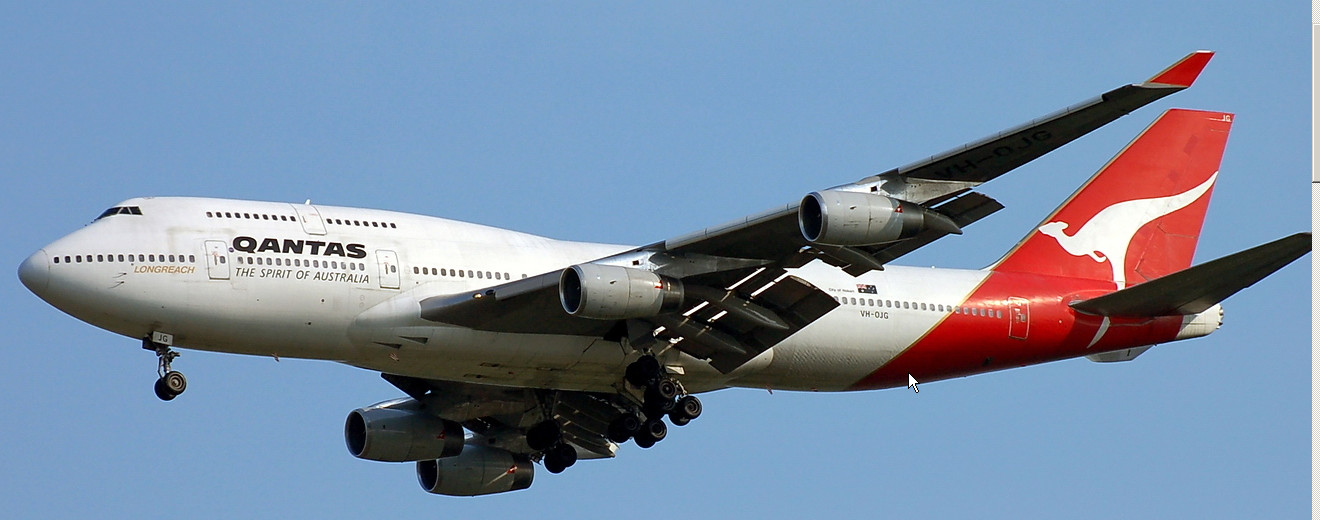
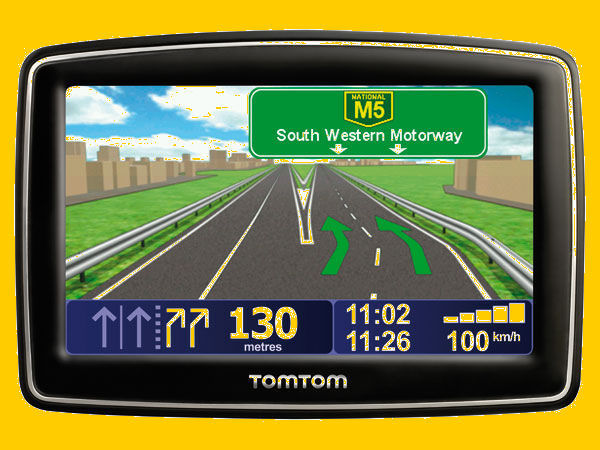

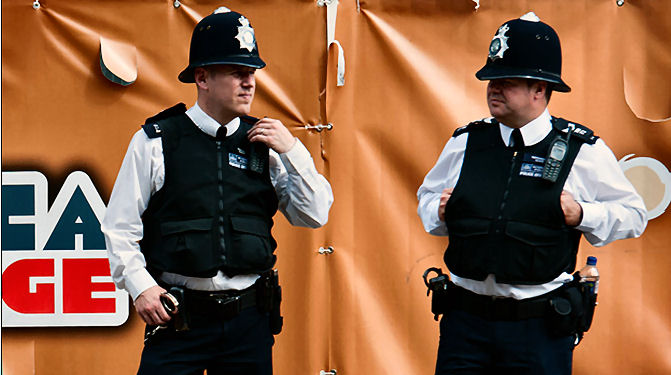
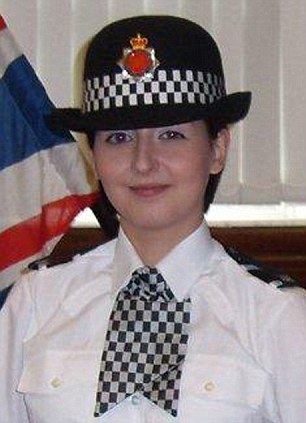 Hughes (right) and Fiona Bone are killed in the line of duty. There are
always those who question why Britain is out of step with most of the
rest of the world, with the exceptions of the Republic of Ireland, New
Zealand, Norway and a handful of other nations.
Hughes (right) and Fiona Bone are killed in the line of duty. There are
always those who question why Britain is out of step with most of the
rest of the world, with the exceptions of the Republic of Ireland, New
Zealand, Norway and a handful of other nations.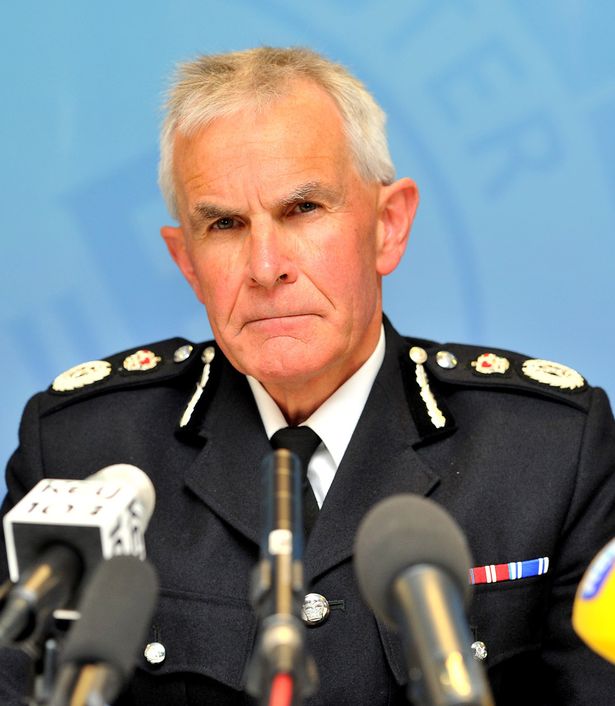 Manchester
Chief Constable Sir Peter Fahy (left) was quick to speak in support of
the status quo. "We are passionate that the British style of policing is
routinely unarmed policing. Sadly we know from the experience in America
and other countries that having armed officers certainly does not mean,
sadly, that police officers do not end up getting shot."
Manchester
Chief Constable Sir Peter Fahy (left) was quick to speak in support of
the status quo. "We are passionate that the British style of policing is
routinely unarmed policing. Sadly we know from the experience in America
and other countries that having armed officers certainly does not mean,
sadly, that police officers do not end up getting shot."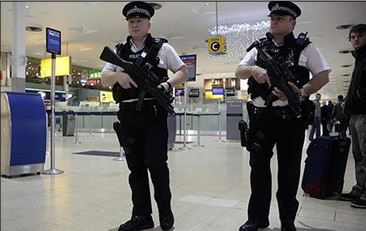 access to Tasers since 2004 despite controversy about their use. Met
Commissioner Bernard Hogan-Howe called for police response officers to
be routinely armed with the weapons in November 2011.
access to Tasers since 2004 despite controversy about their use. Met
Commissioner Bernard Hogan-Howe called for police response officers to
be routinely armed with the weapons in November 2011.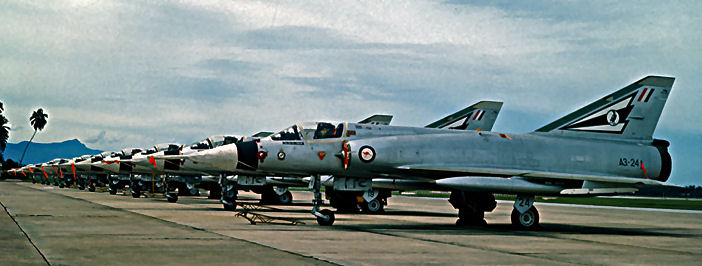
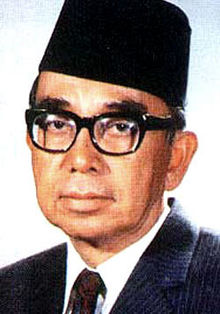 guerrilla activity
in Peninsula Malaysia as the “New Emergency”. By making the comparison [to
the 48-60 Emergency], the Prime Minister clearly signalled the seriousness
with which the Malaysian Government viewed the renewal of the communist
threat.
guerrilla activity
in Peninsula Malaysia as the “New Emergency”. By making the comparison [to
the 48-60 Emergency], the Prime Minister clearly signalled the seriousness
with which the Malaysian Government viewed the renewal of the communist
threat. 